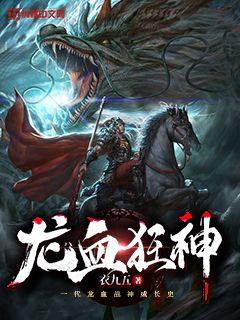世预赛中国对日本比分多少|中国对日本的决赛视频
- 来源:jrs直播网
- 2024-11-25 05:11:48

Certainly! Here's the structured 3000-word article on the topic of "The Key Role of Wingbacks in the 3-5-2 Formation":
**Abstract:**
In the tactical landscape of football, the wingbacks in a 3-5-2 formation play a pivotal role, bridging defense and attack with their dual responsibilities. This article explores their strategic importance from multiple angles: defensive solidity, offensive width, transition facilitation, and modern adaptations. By delving into these aspects, we uncover how these players shape team dynamics and influence match outcomes in contemporary football.
---
1、Defensive Stability and Role Definition
Wingbacks in the 3-5-2 formation are fundamental to defensive stability, providing essential cover and support to the central defenders. Their role extends beyond traditional fullbacks, often requiring them to operate in a hybrid capacity, blending defensive nous with tactical discipline.
They are tasked with nullifying opposition wingers and providing additional defensive layers, crucial in preventing crosses and cutting off passing lanes. This defensive solidity is the cornerstone upon which successful 3-5-2 formations are built, offering a secure foundation from which to launch counterattacks.
Moreover, their ability to read the game and anticipate transitions allows them to intercept passes and initiate quick counter-pressing, disrupting opponents' buildup play effectively.
2、Providing Width and Attacking Threat
One of the primary responsibilities of wingbacks in the 3-5-2 is to provide width in attack. By pushing high up the flanks, they stretch the opposition defense, creating space for forwards and midfielders to exploit. This wide positioning not only forces opposing fullbacks to track back but also opens passing lanes into the attacking third.
Their crossing ability becomes critical in delivering accurate balls into the box, capitalizing on numerical advantages during offensive phases. This attacking prowess often transforms them into auxiliary wingers, capable of delivering decisive assists or even scoring goals themselves.
Furthermore, their positional intelligence allows them to make overlapping runs, dragging markers out of position and creating overloads in wide areas, which are invaluable in breaking down compact defenses.
3、Transition Facilitation and Midfield Control
Wingbacks act as pivotal links between defense and midfield, facilitating smooth transitions from defense to attack. Their proficiency in quickly shifting from defensive to offensive roles enables teams to maintain fluidity and tempo during rapid transitions.
They play a crucial role in building play from deep, often dropping between center-backs to receive the ball and initiate attacks. This deep-lying playmaking ability grants them a strategic advantage in dictating the pace of the game and bypassing high-pressing opponents.
Moreover, their presence in midfield areas during possession phases adds an extra layer of numerical superiority, enabling teams to dominate possession and control the tempo of the match effectively.
4、Modern Adaptations and Tactical Flexibility
In modern football, the role of wingbacks in the 3-5-2 formation has evolved to encompass greater tactical flexibility and versatility. Coaches often deploy them in hybrid roles, allowing them to interchange positions with central midfielders or even push higher up as wide forwards in attacking phases.
Their adaptability to different phases of play and opposition tactics makes them indispensable assets in contemporary football systems. They are adept at adjusting their positioning based on game situations, seamlessly transitioning between defensive, transitional, and offensive roles.
Furthermore, their fitness levels and endurance are critical, as they are expected to cover large distances during matches, both in defensive tracking and offensive support.
总结:
Wingbacks in the 3-5-2 formation are linchpins, balancing defensive solidity with attacking flair to shape team dynamics decisively. Their dual roles as defensive stalwarts and offensive catalysts underscore their significance in modern football tactics. By anchoring the defensive line, providing width in attack, facilitating smooth transitions, and adapting to evolving game demands, wingbacks redefine the strategic landscape of the beautiful game.
They epitomize the modern footballer, blending athleticism with tactical acumen to influence match outcomes profoundly.
文章摘要:马拉多纳,足坛天才还是魔法师?这个问题困扰着无数足球迷,马拉多纳以其出色的技术和独特的风格成为时代的符号。本文将从多个角度对马拉多纳进行探讨,包括其技术造诣、颠覆性的风格、影响力以及矛盾的人格魅力。通过深入分析,揭示出马拉多纳在足坛的独特地位,最终总结这位传奇球员的不朽魅力。
1、技术造诣
马拉多纳在场上展现出的惊人技术造诣让人叹为观止。他的运球技术和突破能力常常令对手防守束手无策。
在比赛中,马拉多纳的传球精准,射门精准,使他成为进攻端的绝对威胁。
不仅如此,马拉多纳还擅长策应进攻,善于制造空档和传球,为队友创造得分机会。
2、颠覆性的风格
马拉多纳的踢球风格独树一帜,他不拘一格,常常在比赛中展现出出人意料的技巧和创意。
马拉多纳善于利用身体优势和速度优势,灵活应对比赛中的各种情况,使对手难以捉摸。
他的过人技术和突破能力让人眼前一亮,成为球场上的一道风景线。
3、影响力
马拉多纳不仅在球场上有着非凡的表现,他的影响力也超越了足球领域,成为一代人心中的偶像和符号。
他的风格和个人魅力吸引着全球无数球迷,成为足球历史上不可或缺的一部分。
马拉多纳的光芒影响着无数后辈球员,激励他们追求卓越,超越自我。
4、矛盾的人格魅力
马拉多纳的人格魅力既具有魅力,又透露出矛盾。他的激情和执着激励着球迷和队友,但也常常因为性格和行为问题饱受争议。
他的非凡天赋和赛场上的表现让人肃然起敬,但他的人生轨迹也充满了坎坷和曲折。
这种矛盾构成了马拉多纳鲜明的个人特色,也是他独特魅力的一部分。
总结:
马拉多纳,足坛天才还是魔法师?这个问题或许无法简单地用一个标签来定义。他的技术造诣、颠覆性的风格、影响力以及矛盾的人格魅力共同塑造了他在足球历史上独特的地位。无论是作为天才球员还是足球魔法师,马拉多纳的传奇地位将永远闪耀在足坛上,成为无数球迷心中的传奇。
Certainly! Here's the structured article on "The Rise and Challenges of Cuban Basketball Players":
**Abstract:**
Cuban basketball has seen both triumphs and tribulations in recent decades. This article explores the journey of Cuban basketball players, highlighting their rise to prominence, the challenges they face within and beyond the sport, and the enduring impact on the national and international stages.
**1、Emergence of Talent**
Cuban basketball has witnessed a surge in talent over the years, marked by grassroots initiatives and national programs aimed at nurturing young athletes. The development of local leagues and academies has provided a fertile ground for budding players to hone their skills and showcase their potential on a larger stage.
Historically, Cuba has produced athletes renowned for their agility and strategic prowess on the court. This foundation has been crucial in shaping the current generation of players, who often emerge from humble beginnings but possess raw talent and a fierce determination to succeed.
In recent years, Cuban basketball federations have intensified efforts to identify and support promising prospects from a young age. Talented individuals are scouted and enrolled in specialized training programs, where they receive coaching and mentorship to refine their technical abilities and tactical understanding of the game.
As a result, Cuban basketball has seen a steady influx of skilled players who are not only competitive domestically but also capable of making significant contributions to international tournaments.
**2、Challenges on the Domestic Front**
Despite the talent pool, Cuban basketball faces formidable challenges within its domestic structure. Issues such as limited funding, outdated infrastructure, and administrative inefficiencies often hinder the sport's growth and competitiveness at the national level.
The Cuban Basketball Federation struggles with financial constraints that affect player development initiatives and infrastructure maintenance. Many training facilities are in need of modernization, and access to quality coaching and resources varies significantly across regions.
Furthermore, the sport faces competition from other popular activities within Cuban culture, diverting potential talent away from basketball. Baseball, for example, remains deeply ingrained in the national psyche and often attracts promising athletes who might otherwise pursue basketball.
These challenges underscore the need for sustained investment in grassroots programs and structural reforms aimed at revitalizing Cuban basketball from the grassroots up.
**3、International Competition and Opportunities**
On the international stage, Cuban basketball players have showcased their skills and resilience, despite facing adversities. Competing against well-funded and highly organized teams from other countries has provided Cuban athletes with invaluable experience and exposure to different styles of play.
Cuban players have historically excelled in regional tournaments such as the Central American and Caribbean Games, where they often dominate competition and secure medals for their country. These achievements not only bolster national pride but also serve as a testament to the talent and dedication of Cuban basketball players.
However, challenges such as limited access to international leagues and restrictive travel policies have restricted opportunities for Cuban athletes to compete at the highest levels abroad. Many promising players find themselves constrained by political and economic factors that limit their ability to pursue professional careers overseas.
Despite these challenges, Cuban basketball continues to produce athletes capable of competing on a global scale, demonstrating resilience and adaptability in the face of adversity.
**4、Future Prospects and Strategic Imperatives**
Looking ahead, the future of Cuban basketball hinges on strategic imperatives aimed at overcoming current challenges and capitalizing on emerging opportunities. Key initiatives include enhancing youth development programs, modernizing infrastructure, and fostering partnerships with international organizations to expand exposure and access for Cuban players.
Investments in coaching education and sports science will be crucial in nurturing the next generation of Cuban basketball stars, equipping them with the skills and knowledge needed to excel in an increasingly competitive global arena.
Furthermore, fostering a supportive ecosystem that encourages collaboration between public and private sectors can help mitigate financial constraints and promote sustainable growth within Cuban basketball.
By addressing these strategic imperatives, Cuban basketball can position itself for continued success and make significant strides towards reclaiming its position among the elite basketball nations of the world.
**Conclusion:**
In conclusion, Cuban basketball has navigated a complex landscape defined by both triumphs and challenges. From the emergence of talented players within a nurturing environment to the obstacles posed by domestic limitations and international competition, Cuban basketball continues to evolve and adapt. Moving forward, strategic investments and reforms will be pivotal in shaping the future trajectory of the sport, ensuring that Cuban athletes can compete and excel on the global stage.
Ultimately, the resilience and passion of Cuban basketball players serve as a testament to their enduring spirit and commitment to the sport, promising a future where Cuban basketball can once again shine brightly.
### 文章摘要
本文探讨西班牙球员Perez在国际足坛的潜力与前景。通过分析其技术能力、战术适应性、心理素质和职业发展规划,揭示他成为未来足坛重要球员的可能性。
---
1、技术能力
Perez展现出的突破能力和传球精准度让人印象深刻。他在场上的创造力和解决问题的能力使他成为任何球队的得力助手。他的技术细腻度和快速反应能力使他在比赛中脱颖而出。此外,他在青训时期培养的基础技能为他未来的发展奠定了坚实基础。
在实战中,Perez展现了对抗对手和创造进攻机会的能力。他在高压比赛中的表现显示出他处理紧张局势的成熟性。这些技能使他能够在不同位置上都有出色的表现。
最重要的是,Perez对于自己技术的不断追求和提高,以及在各种比赛中展示出的多样化技巧,预示着他在未来能够在国际舞台上取得显著进展。
2、战术适应性
Perez不仅仅是一名技术出色的球员,他还展现了出色的战术理解和适应能力。他能够根据教练的战术要求调整自己的位置和角色,为球队贡献多方面的能量。
他在场上的灵活性使他可以在不同战术体系中都能够发挥重要作用。无论是作为中场的支点还是边路的推动力,Perez都能够在团队战术中找到自己的位置。
此外,他在防守端的贡献和对整体阵型的理解,使他成为教练战术板上不可或缺的一部分。他的战术意识和团队合作精神是他未来在国际舞台上发挥重要作用的关键因素。
3、心理素质
Perez展现出了超越年龄的成熟和心理坚韧。他在关键比赛中的冷静表现和面对挑战时的果断决策,显示出他具备了高水平竞技体育所需的心理素质。
他能够在逆境中保持镇定,并在比赛关键时刻发挥出色。这种稳定的表现和对团队利益高度关注的态度,使他成为球队中的领袖人物之一。
心理素质的强大支撑,不仅使Perez能够在高压环境下发挥自如,也为他未来在面对顶级对手时保持一贯的高水平提供了保障。
4、职业发展规划
Perez的职业发展规划展现出了长远眼光和专业态度。他通过与资深教练和导师的交流和指导,不断完善自己的技能和战术理解。
他参与了多种国际比赛和训练营,积累了丰富的国际比赛经验。这种积极的参与和对自身发展的高度重视,为他未来能够在国际足坛上稳步前进奠定了坚实基础。
此外,他在职业生涯中的职业操守和对自身身体素质的管理,使他能够长期保持竞技状态,并应对高强度比赛的挑战。
总结:
Perez不仅凭借出色的技术能力和战术适应性,还具备了强大的心理素质和清晰的职业发展规划。这些因素共同构成了他未来在国际足坛上取得成功的坚实基础。
他的潜力和前景不容小觑,预示着他有望成为未来足坛的重要人物。
文章摘要的内容:罗马队最近引进了一位来自智利的新球员,他正在成为球队的关键人物,引领着球队进入新的篇章。本文将从他的技术贡献、领导能力、战术适应性和球队氛围四个方面详细阐述他对罗马队的影响和贡献。
1、技术贡献
新智利球员如何通过技术统治场上比赛。
他的传球和控球技巧如何提升罗马队的进攻效率。
他在防守端的表现如何帮助球队保持稳定。
2、领导能力
他在球场上如何展现领袖风范。
如何在关键时刻振奋队友,影响比赛走向。
他在训练场上如何作为榜样影响队友。
3、战术适应性
他在不同比赛场合下的战术角色如何变化。
他如何适应罗马队的战术体系,发挥最大潜力。
他与其他关键球员之间的战术默契如何建立。
4、球队氛围
他如何改善罗马队的整体氛围和团结。
他在更衣室中的角色和影响力如何。
球迷和媒体对他的评价以及他在俱乐部中的形象如何。
总结:
新智利球员的加入不仅为罗马队带来了技术上的提升,还通过其领导能力和战术适应性,显著改善了球队的整体表现。他不仅在场上发挥关键作用,还在球队内部建立了积极的氛围,成为球队新篇章的重要推动力。
### 文章摘要
本文将深入探讨叙利亚足球运动员西安的成长轨迹,从他在家乡的起步到如何踏上国际足坛的旅程。通过分析他的个人经历、职业生涯中的关键时刻以及对叙利亚足球的影响,揭示了一个充满坎坷和荣耀的足球传奇。
---
1、家乡初探
西安出生于叙利亚一个足球文化浓厚的家庭,早年的足球启蒙和家庭背景对他的职业生涯产生了怎样的影响?
在他成长的小镇上,足球是如何被当作一种生活方式来培养和发展的?
他的早期训练和参与地方性比赛如何成为他日后踏上国际舞台的基础?
2、青年岁月
进入青少年阶段,西安的足球才华如何被发掘和培养?
他是如何从本地俱乐部跃升至国家青年队,并展示出非凡的天赋和领导力?
他在青年赛事中的表现如何引起了国际球探的注意?
3、职业生涯起步
西安踏入职业足球后,面临了怎样的挑战和机遇?
他是如何逐步进入国家一线队,并在重要比赛中展现出关键的技术和战术能力?
他的职业生涯早期经历如何奠定了他今日的地位?
4、国际舞台的辉煌
西安如何在国际足坛上站稳脚跟?
他在国际比赛中的突出表现和对球队的重要贡献如何提升了他的国际声誉?
他在不同联赛和杯赛中的经历如何塑造了他作为一名国际球星的形象?
总结:
西安的足球旅程不仅仅是个人成就的展示,更是对叙利亚足球潜力和机会的一次深刻探索。他的故事激励着无数年轻球员追求梦想,并为他们展示了如何在困难中找到机遇,在挑战中追求卓越。
### 文章摘要
本文探讨禁赛球员如何重返赛场的过程及影响。从心理、身体恢复、社会接纳以及职业发展四个方面详细阐述,展现了他们的坚韧与复苏,以及足球界对待挑战的态度。
---
1、心理挑战与适应
禁赛球员面对复出的心理障碍往往不容忽视。首先,他们经历了自信与信任的双重损害。曾经的荣耀与失落交织,对个人形象与职业生涯构成深远影响。
然而,通过心理咨询与团队支持,他们逐步重建自我认同与赛场信心。心理训练与应对压力的技能成为他们重新融入竞技环境的关键。
最终,通过对内心挑战的克服,他们在复出后展现出更强大的心理韧性与稳定性。
2、身体状态与恢复
禁赛期间,身体状态的维持与恢复至关重要。受伤或长时间停赛后,体能、技术与反应速度可能大幅度下降。
因此,通过个性化的康复计划与密切监控,他们在赛前状态的恢复过程中迈出了重要的一步。
专业团队的协助与科技手段的运用,帮助他们有效地克服体能上的挑战,并在复出后保持了竞技状态的稳定性。
3、社会接纳与支持
禁赛球员在复出过程中面对的不仅是个人挑战,还有来自外界的审视与质疑。媒体、球迷与社会舆论的反应,对其复出的态度和影响巨大。
通过积极的社交媒体互动、公共活动参与以及对社会责任的承担,禁赛球员逐渐赢得了公众的理解与支持。
他们的社会形象与职业精神成为了向球迷与社会传递正能量的关键因素。
4、职业发展与未来展望
禁赛球员复出后,面临的挑战不仅是赛场上的竞技,还包括职业发展的长远规划。对于年龄较大或技术已逐渐衰退的球员,重新适应顶级赛事的竞争力是一大考验。
然而,通过转型规划、教练与管理层的角色转变,他们找到了在职业生涯后期的新定位与发展空间。
综合利用自身经验与资源,禁赛球员不仅实现了个人的职业转型,还对俱乐部与足球界的发展起到了积极的推动作用。
总结:
禁赛球员如何重返赛场,不仅是一段个人挑战与复苏的历程,更是足球界对于逆境的坚韧态度的体现。通过心理、身体恢复、社会接纳及职业发展四个方面的全面阐述,展示了他们如何在逆境中重拾信心、超越困难,最终再次在绿茵场上闪耀光芒。
上一篇: jrs直播免费体育直播ufc
下一篇: jrs直播低调录像回放










